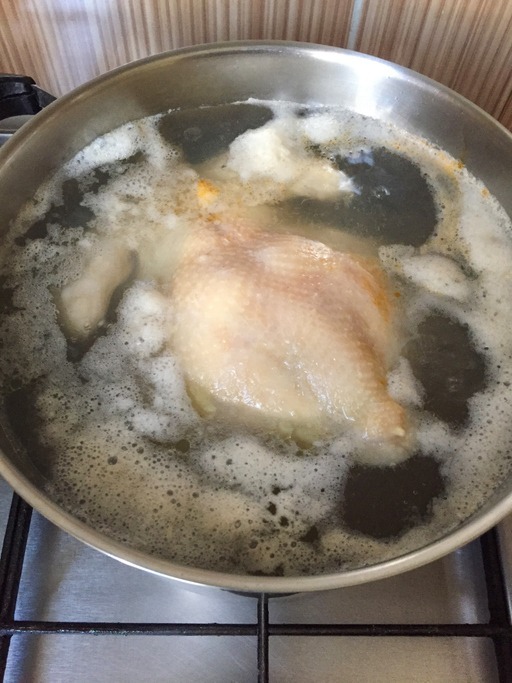ADVERTISEMENT
Why Does Chicken Foam When It’s Being Boiled? And 3 Solutions to Prevent It
Have you ever boiled chicken and noticed a strange, foamy layer forming on the surface of the water? This frothy buildup can be off-putting, but rest assured, it’s completely normal. Understanding why chicken foams during boiling can help you figure out how to handle it, and with a few simple solutions, you can prevent or reduce the foam for a clearer, more appetizing result. Let’s dive into why this happens and how to manage it effectively.
Why Does Chicken Foam When It’s Boiled?
The foam that forms when boiling chicken is the result of proteins, impurities, and blood rising to the surface of the water. Here’s a breakdown of what causes this foamy buildup:
- Proteins in the Chicken: Chicken, like other meats, contains proteins that, when exposed to heat, begin to break down. As the water heats up, the proteins from the meat and connective tissues are released into the water. These proteins combine with air and form bubbles that rise to the surface, creating foam.
- Impurities and Blood: Even though chicken is typically cleaned before being sold, it can still contain small amounts of residual blood and other impurities. As the chicken is boiled, these impurities are released into the water, contributing to the foam. This is particularly noticeable with bone-in pieces like chicken legs or thighs, as the marrow inside the bones can also leach out during the cooking process.
- Fat and Scum: The fat in the chicken also contributes to the foamy substance. As fat renders (melts) during the boiling process, it can mix with the proteins and other particles, forming a scum on top of the water.
Is Foam Dangerous or Harmful?
No, the foam isn’t dangerous. It’s simply a combination of proteins, fat, and other natural substances that are part of the chicken. However, the foam can make the water look unappetizing and can affect the clarity of the broth. While you don’t have to worry about its safety, you may want to remove it for a cleaner appearance and taste.
3 Solutions to Prevent Chicken Foam While Boiling
While the foam itself is harmless, there are several methods you can use to reduce or prevent it. Here are three simple solutions to get rid of that frothy buildup:
1. Blanching the Chicken Before Boiling
Blanching is an effective method to remove impurities and reduce foam. The process involves briefly boiling the chicken in water and then discarding that water before continuing to cook it in fresh water. This step helps to release most of the blood and impurities, significantly reducing foam production during the actual cooking process.
How to Blanch Chicken:
- Place the chicken pieces in a large pot of cold water.
- Bring the water to a boil over medium-high heat.
- As the water begins to boil, you will notice foam starting to form. Let it boil for about 3-5 minutes.
- Remove the chicken from the pot and discard the water.
- Rinse the chicken under cold water to remove any remaining scum.
- Add the chicken back into a clean pot of fresh water and continue cooking as desired.
Blanching can also help the chicken cook more evenly, and it’s an excellent step if you’re making a clean, clear broth.
For Complete Cooking STEPS Please Head On Over To Next Page Or Open button (>) and don’t forget to SHARE with your Facebook friends
ADVERTISEMENT
